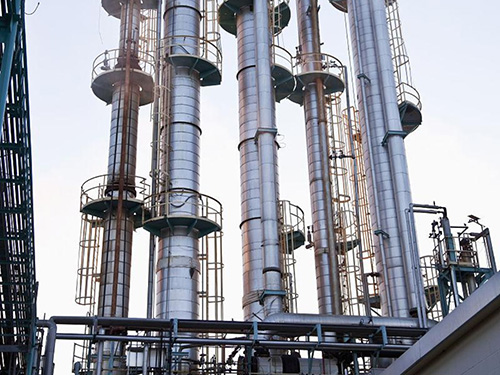
I. Introduction
In the petroleum industry, crude oil dewaxing is a crucial step. It can not only improve the quality of crude oil but also meet the requirements of subsequent processing and usage. This article will deeply explore the importance and significance of crude oil dewaxing, and introduce in detail several common dewaxing methods, as well as their comparisons and future development trends.

II. Why crude oil needs to be dewaxed
The waxy components in crude oil have a significant impact on its properties. Firstly, wax reduces the fluidity of crude oil, making transportation and storage more difficult. Secondly, wax also has an adverse impact on the refining process and product quality, such as reducing the viscosity and stability of lubricating oil. Therefore, in order to meet the requirements of subsequent processing and usage, crude oil must be dewaxed.
III. Several dewaxing methods
Solvent dewaxing
Solvent dewaxing is a method of realizing dewaxing through solvent extraction and separation by utilizing the difference in solubility between waxy and oily substances in the solvent. The key to this method lies in choosing the appropriate solvent, such as ketones, benzenes, etc. Solvent dewaxing has the advantages of simple operation and good dewaxing effect, but the equipment investment is relatively large and the energy consumption is high.
Cold pressing dewaxing
Cold pressing dewaxing is to separate the waxy substances from the crude oil through physical methods. It utilizes the crystallization characteristics of wax at low temperatures and separates the waxy substances through pressing or centrifugation. Cold pressing dewaxing is suitable for treating crude oil with a low wax content and has the advantages of simple operation and low energy consumption, but the dewaxing effect is relatively poor.
Urea dewaxing
Urea dewaxing is a method of separating the waxy substances from the crude oil by utilizing the interaction between urea and waxy molecules. It forms a complex with the waxy molecules through urea, and then decomposes the complex by heating to achieve dewaxing. Urea dewaxing is suitable for treating low-wax-content crude oil and has the advantages of good dewaxing effect and simple operation, but the cost of urea is relatively high.
Catalytic dewaxing
Catalytic dewaxing is a method of achieving dewaxing by cracking waxy molecules into small-molecule hydrocarbons using the action of a catalyst. This method has the advantages of good dewaxing effect and high product yield, but the cost of the catalyst is high and the operating conditions are relatively harsh.
Introduction to other dewaxing methods
In addition to the above several common dewaxing methods, there are also some other methods, such as molecular sieve dewaxing, membrane separation dewaxing, etc. These methods have their own characteristics and are suitable for different types of crude oil and processing requirements.
IV. Comparison of different dewaxing methods
When choosing a dewaxing method, multiple factors need to be considered, such as efficiency, cost, impact on crude oil quality, and environmental protection. By comparing the advantages and disadvantages of different dewaxing methods, the most suitable dewaxing method for one's own needs can be selected.
V. Development trends of dewaxing technology
With the continuous progress of science and technology and the increasing requirements for environmental protection, dewaxing technology is also constantly developing. In the future, dewaxing technology will develop in a more efficient and environmentally friendly direction. The research and application of new technologies will further improve the dewaxing efficiency and quality, reduce production costs and energy consumption, and at the same time reduce the impact on the environment.
VI. Conclusion
Crude oil dewaxing is an indispensable part in the petroleum industry. By choosing the appropriate dewaxing method, the quality and processing efficiency of crude oil can be improved to meet the requirements of subsequent processing and usage. In the future, with the continuous development and innovation of dewaxing technology, we have reasons to believe that crude oil dewaxing will become more efficient, environmentally friendly, and intelligent.



